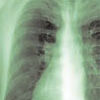Get Smart
In YOU: The Smart Patient: An Insider’s Handbook for Getting the Best Treatment, authors Michael F. Roizen, MD, and Mehmet C. Oz, MD, well-credentialed celebrity physicians, tell the reader that being a smart patient may make the difference between good and poor care and may even save your life. Everyone can be a “medical detective,” they suggest, seeking and supplying the facts that providers and administrators need in order to avoid errors or mix-ups.
The Joint Commission Resources, a collaborator on this publication, announces on its Web site that this book “empowers patients” (www.jcrinc.com/generic.asp?durki=11727&site=11&return=405.). Dr. Oz, in a Web post to customers who might purchase the book, puts it this way: “[T]he Joint Commission, our nation’s healthcare safety advocate, approached us to help with a big problem. Medical errors cost us 98,000 lives per year, and the Joint Commission could not squash this crazily large number without pulling in the biggest ally of all, the Smart Patient.” It’s a “scary statistic,” but true, he writes, “You have a two in five chance of being affected by a major medical complication in your life.” (For more information on the book, visit www.amazon.com/YOU-Insiders-Handbook-Getting-Treatment/dp/0743293010.)
The Hospitalist asked some hospitalists what they would recommend to a friend or relative headed for a hospital stay. Do they have any tips that only an insider would know? As might be expected, some of their advice echoes that already available in print, in broadcasts, and on the Web. And some things that were mentioned in these publications were also on our hospitalists’ list, including bringing along statistics, dates, and other healthcare specifics that might be crucial to providers. In fact, Drs. Roizen and Oz recommend assembling a thorough health history and bringing two copies of it to hospital admission—one especially for “the admitting nurse who welcomes you to your bed.”
Assume Nothing
In their book chapter on hospital stays, Drs. Oz and Roizen emphasize that patients and their visitors should keep an eye out to make certain hospital staff wash their hands and give the patient the right treatments, tests, and medications. “It’s astounding the amount of diligence you and your family will have to exercise during a hospital stay,” a reader-reviewer writes on the book’s Web page on the Amazon.com site. Some of the warnings posted in a book excerpt at the Joint Commission on Accreditation of Healthcare Organizations (JCAHO)’s site include “Don’t touch that remote!” and “wear rubber gloves” if you do want to watch TV. Readers are told that “a study found that the TV remote control is one of the most germ-infested things in a hospital room.”
Patients are also cautioned to “insist on being scanned,” to “insist on a clean stethoscope,” and to keep “an industrial-sized jug of alcohol hand-sanitizing gel” by the bed. In fact, the authors write: “Stethoscopes are filthy from being used on several patients an hour. Most doc[tor]s now wash their stethoscopes with alcohol between patients, but we’d always ask.” Our hospitalists agreed.
Ian Jenkins, MD, a hospitalist with the University of California at San Diego, would tell his friends and family to remind providers to wash their hands. “Don’t let anyone touch you unless you’ve seen them wash or gel their hands correctly—and their stethoscopes, too.”
Drs. Oz and Roizen say, “You might even post a sign that reads ‘Thank You for Washing Your Hands’ as a gentle reminder.”
Trust your intuition, one hospitalist tells people facing hospitalization. “If you sense that something is awry, it probably is,” says Jeanne Farnan, MD, a hospitalist scholar at The University of Chicago Hospitals. “Discuss concerns with physicians/nurses. Write down your questions in case they come to you spontaneously.”



